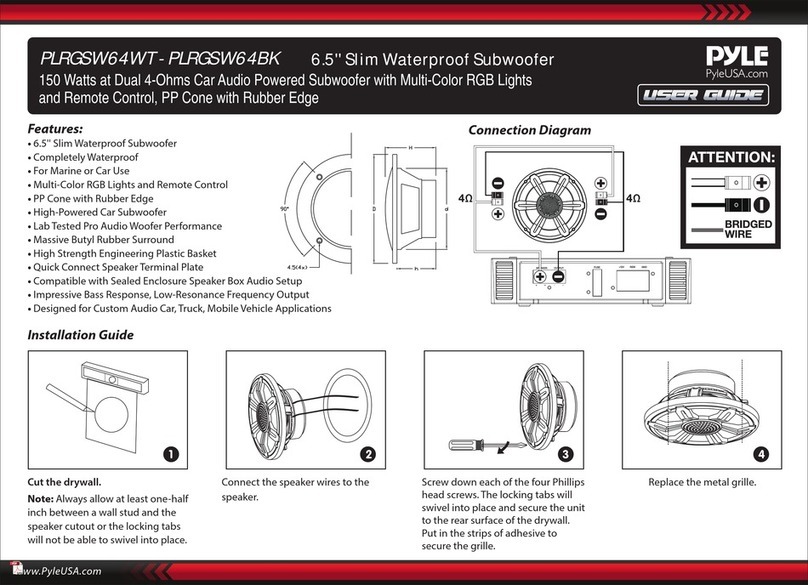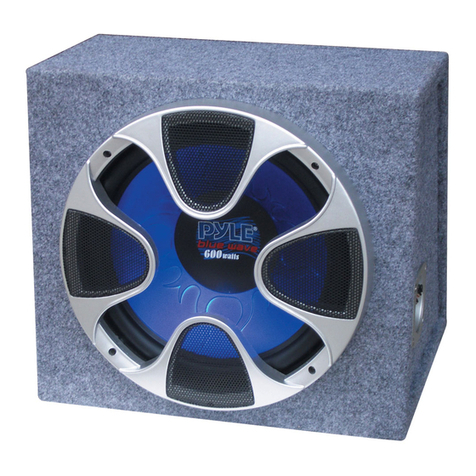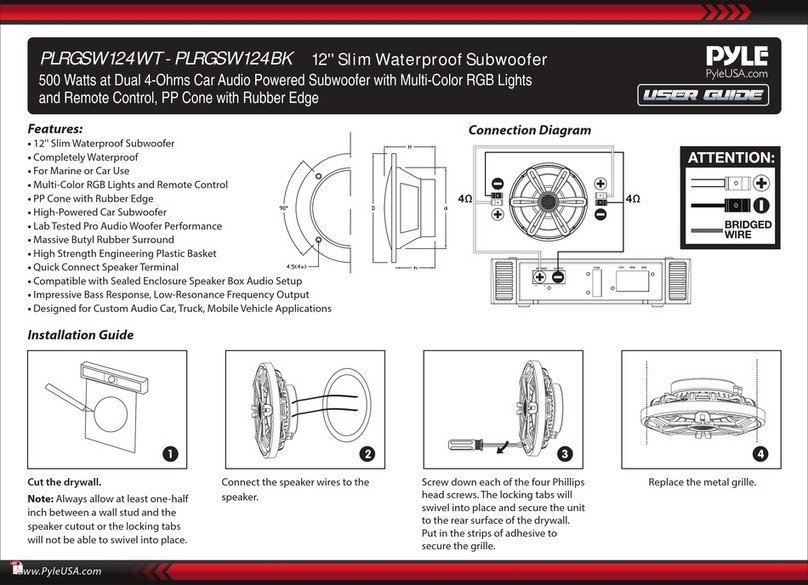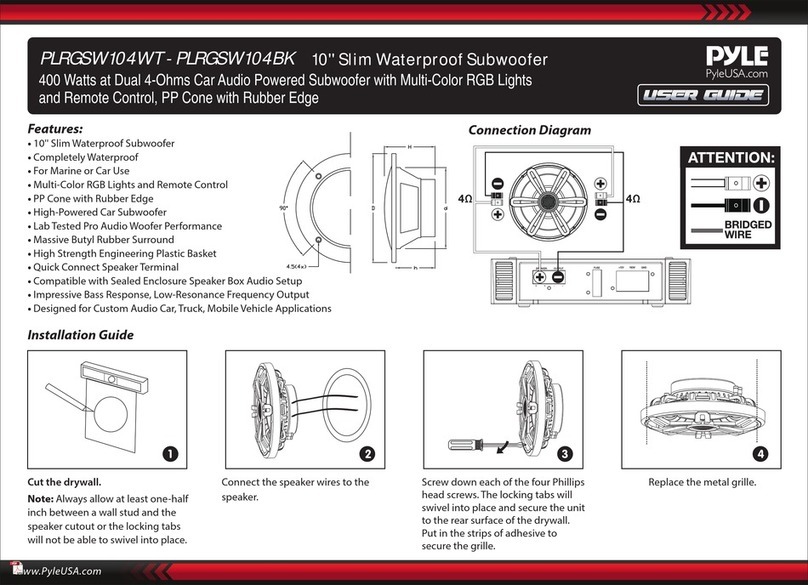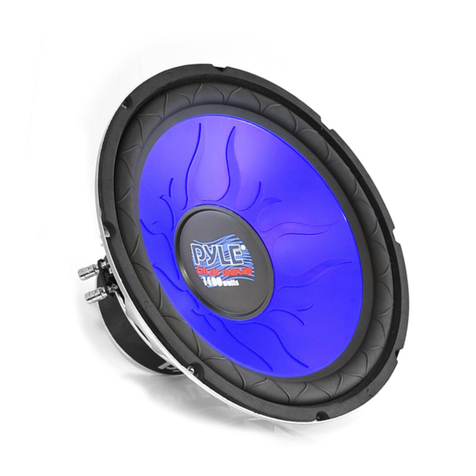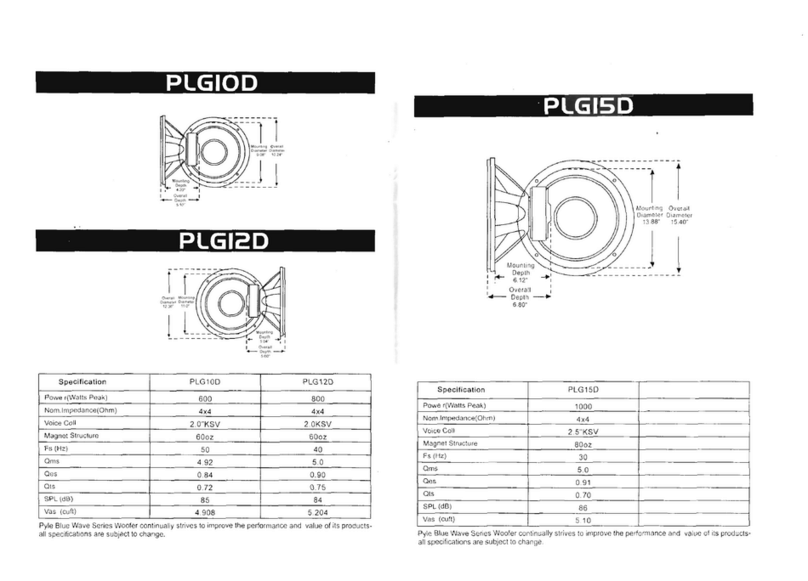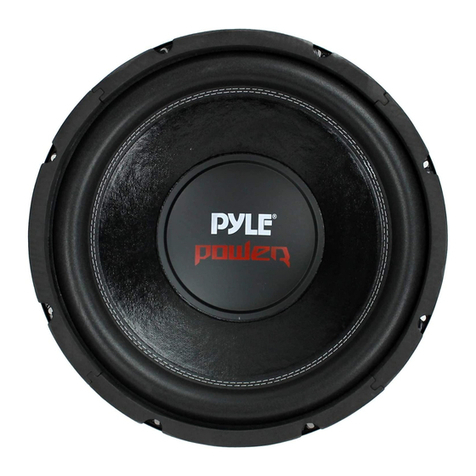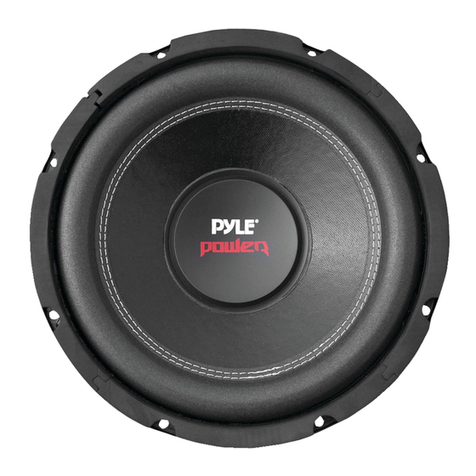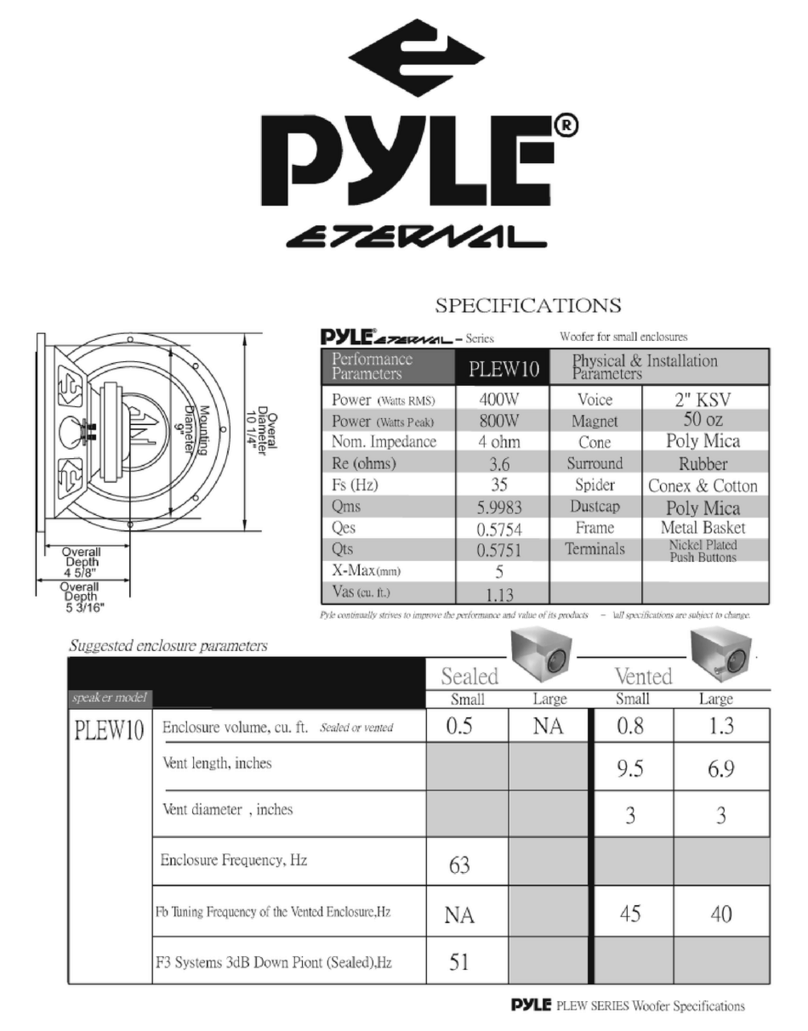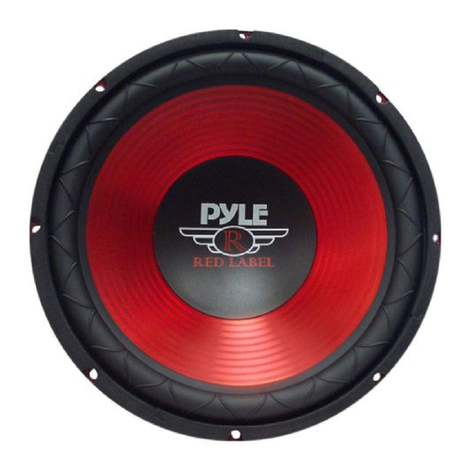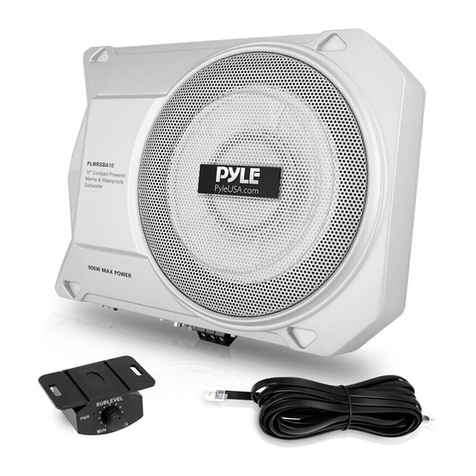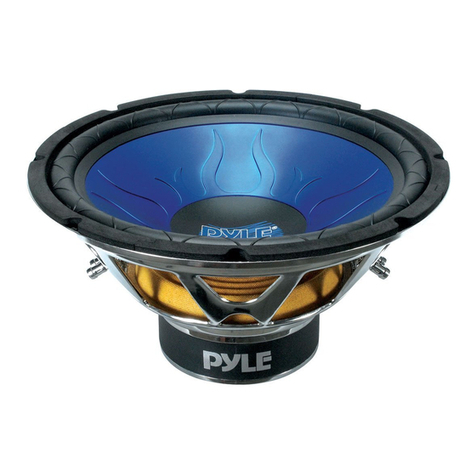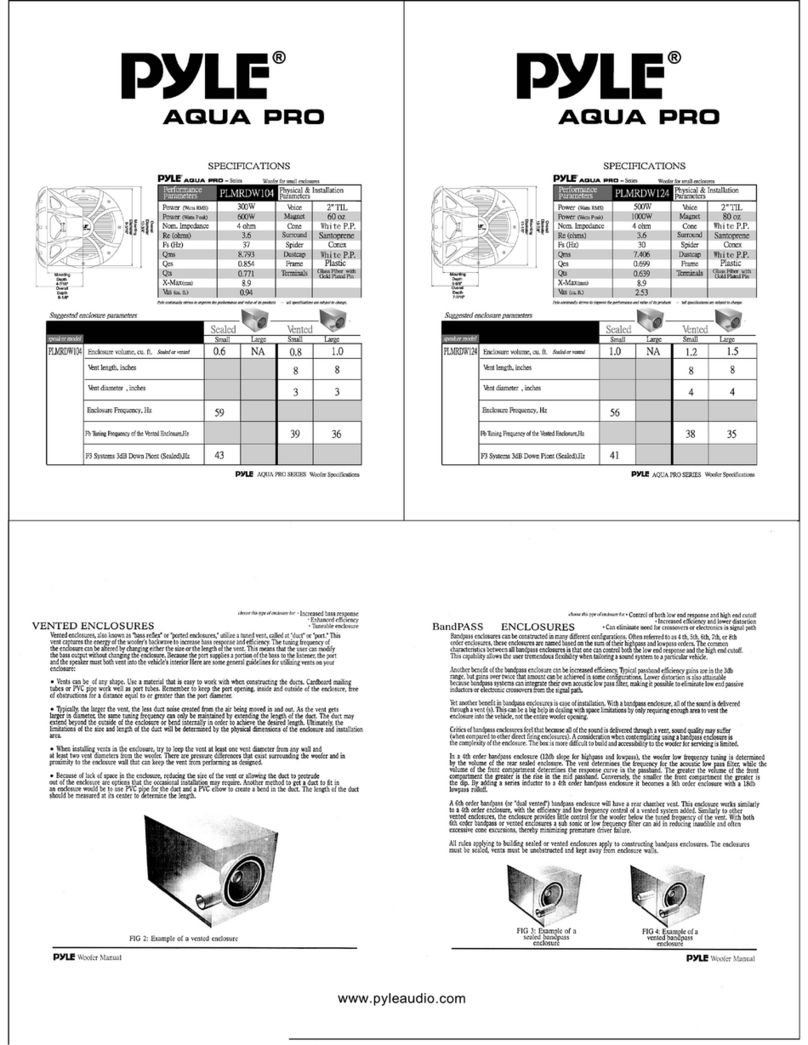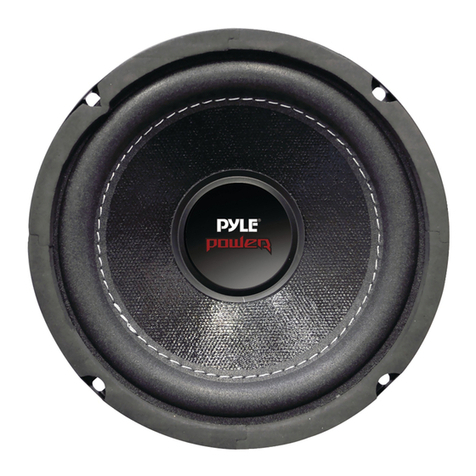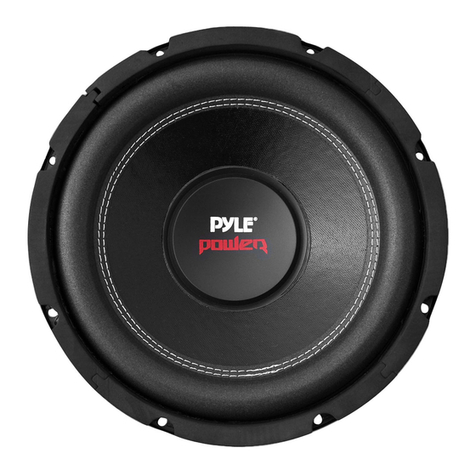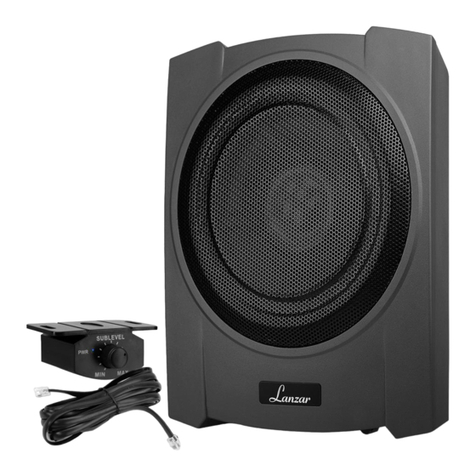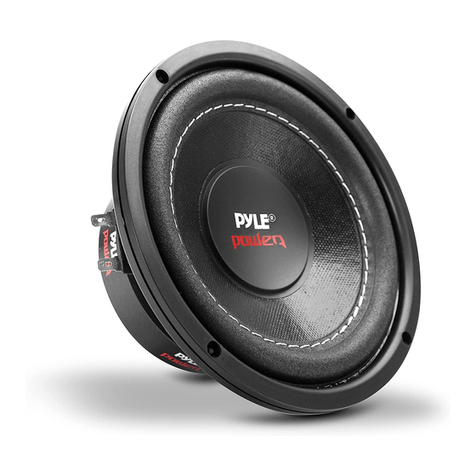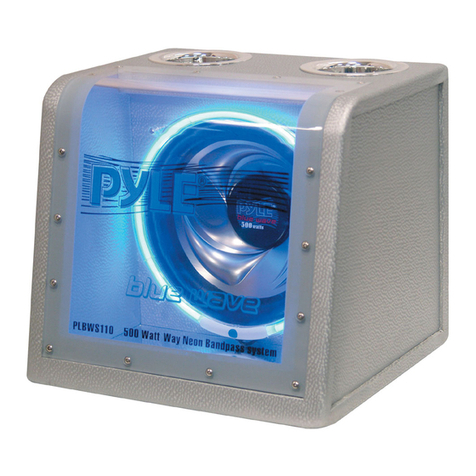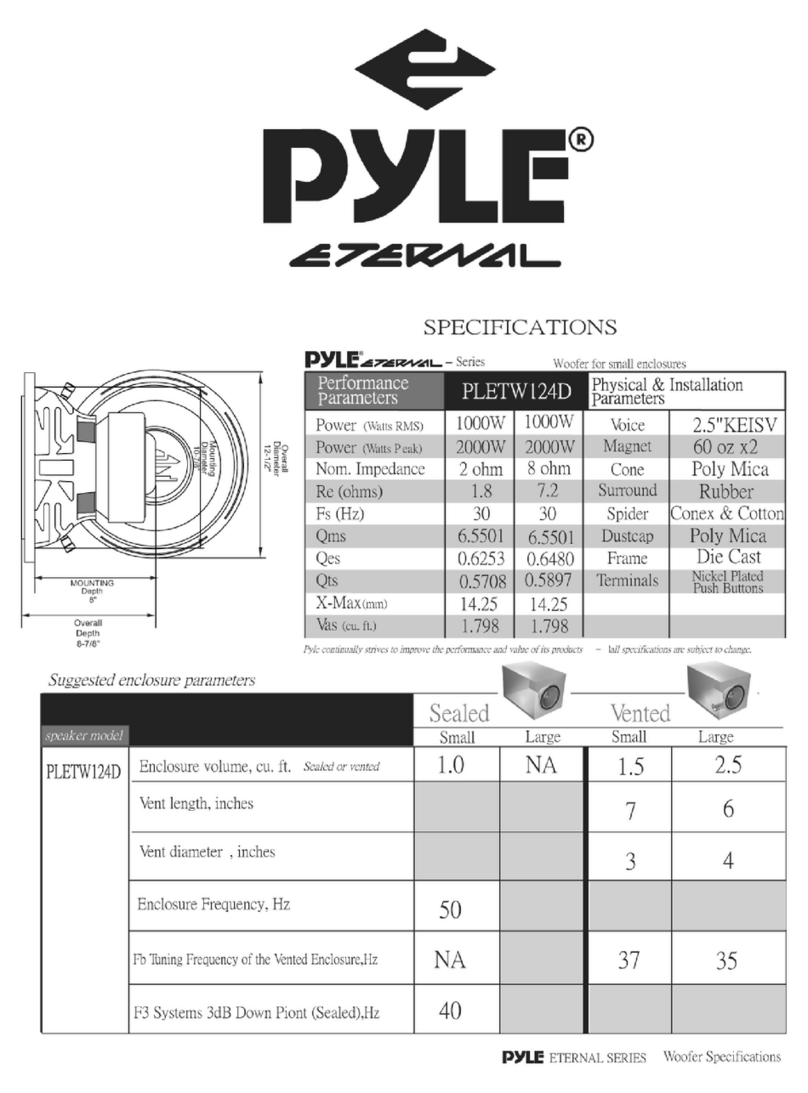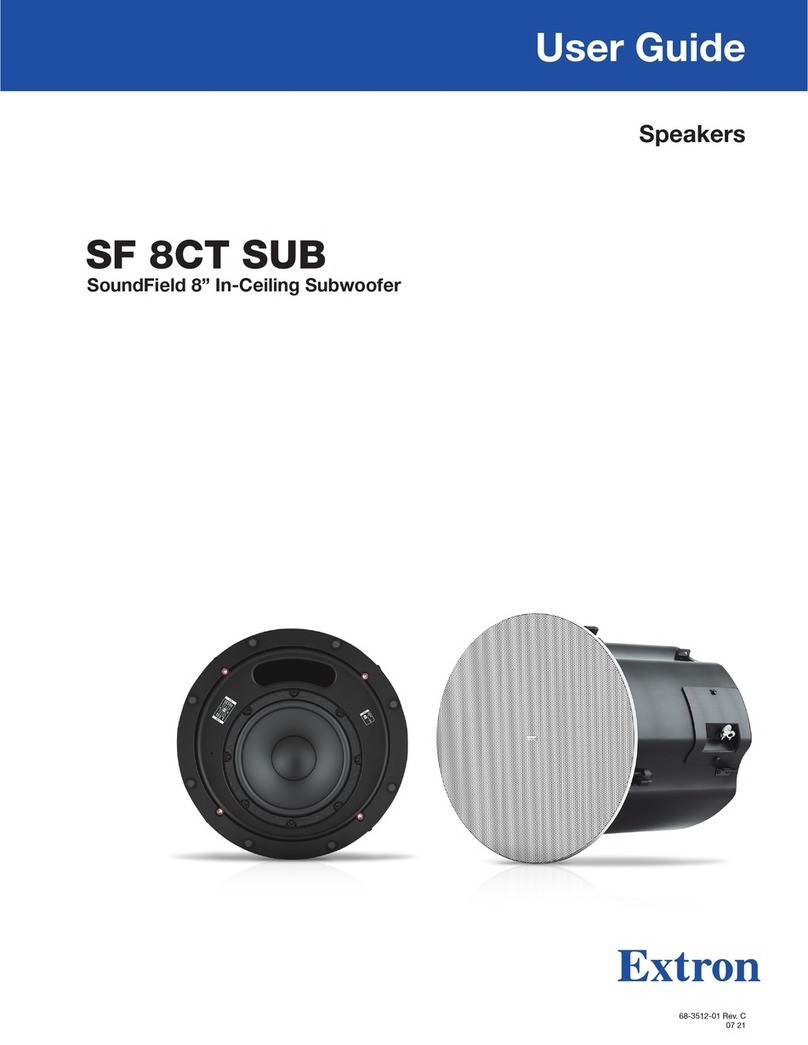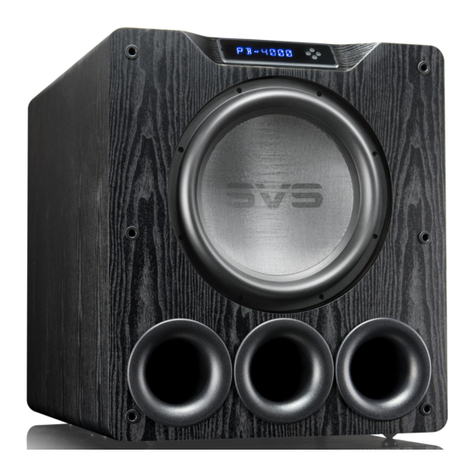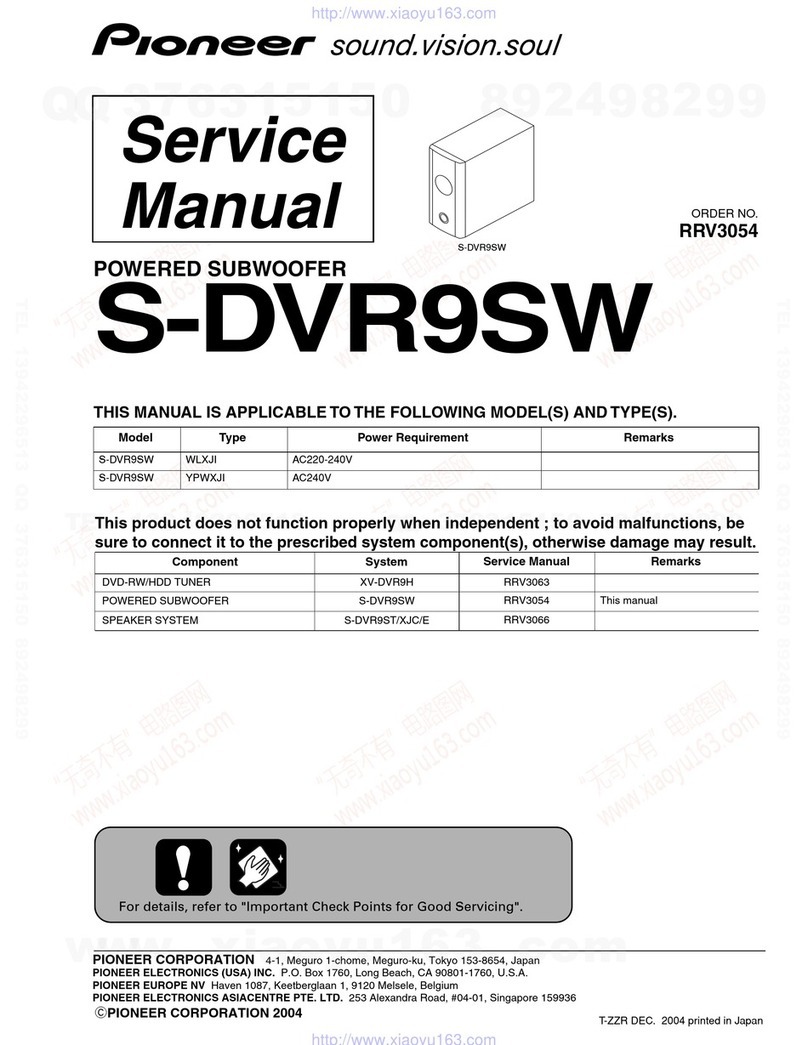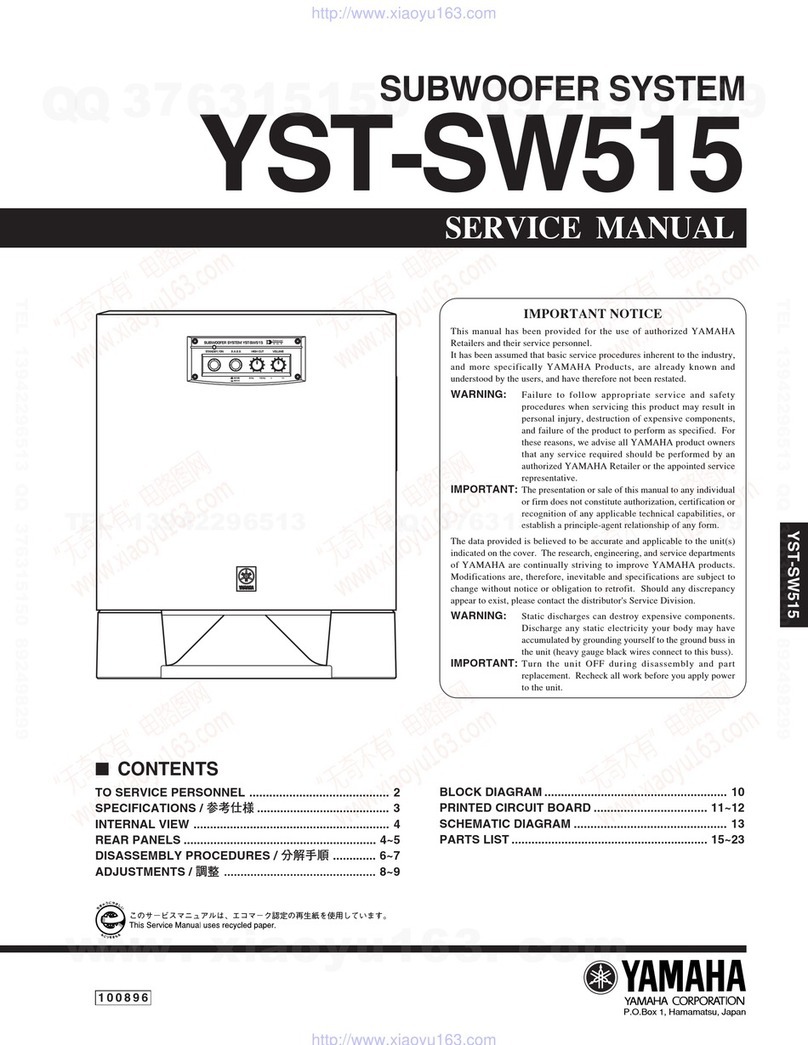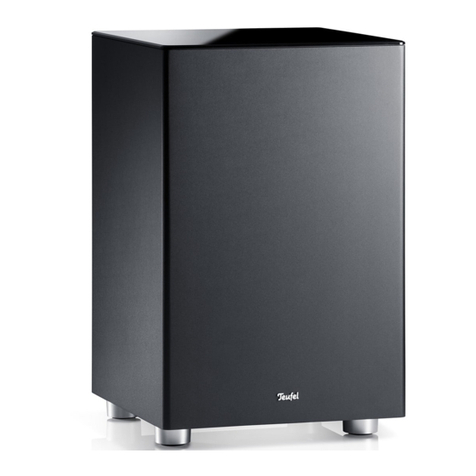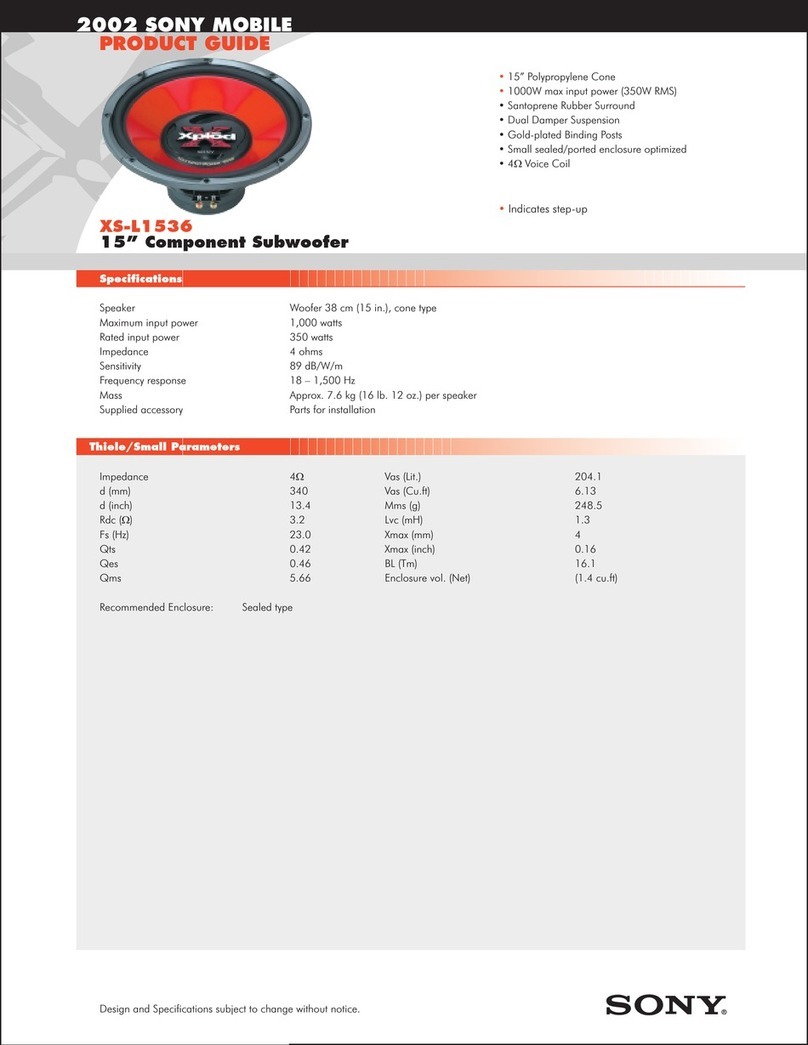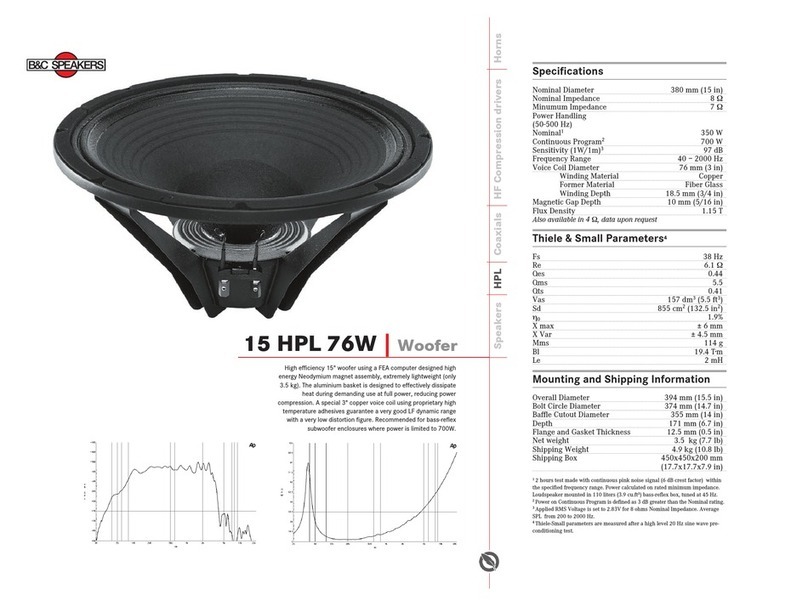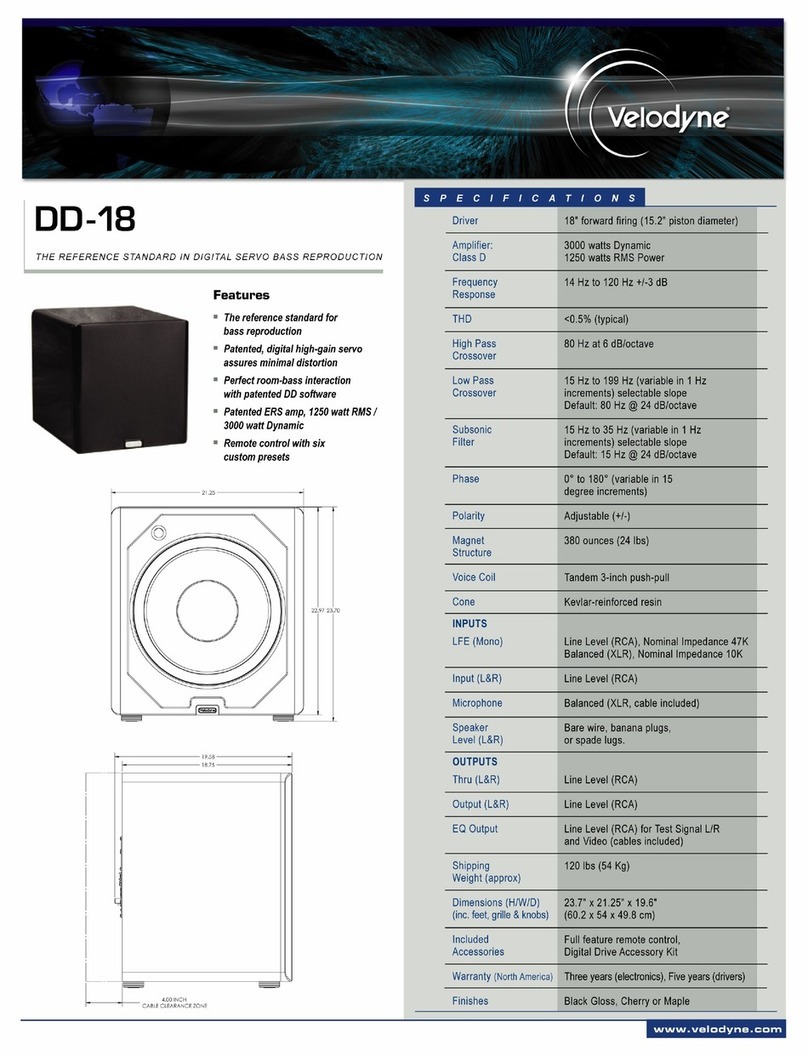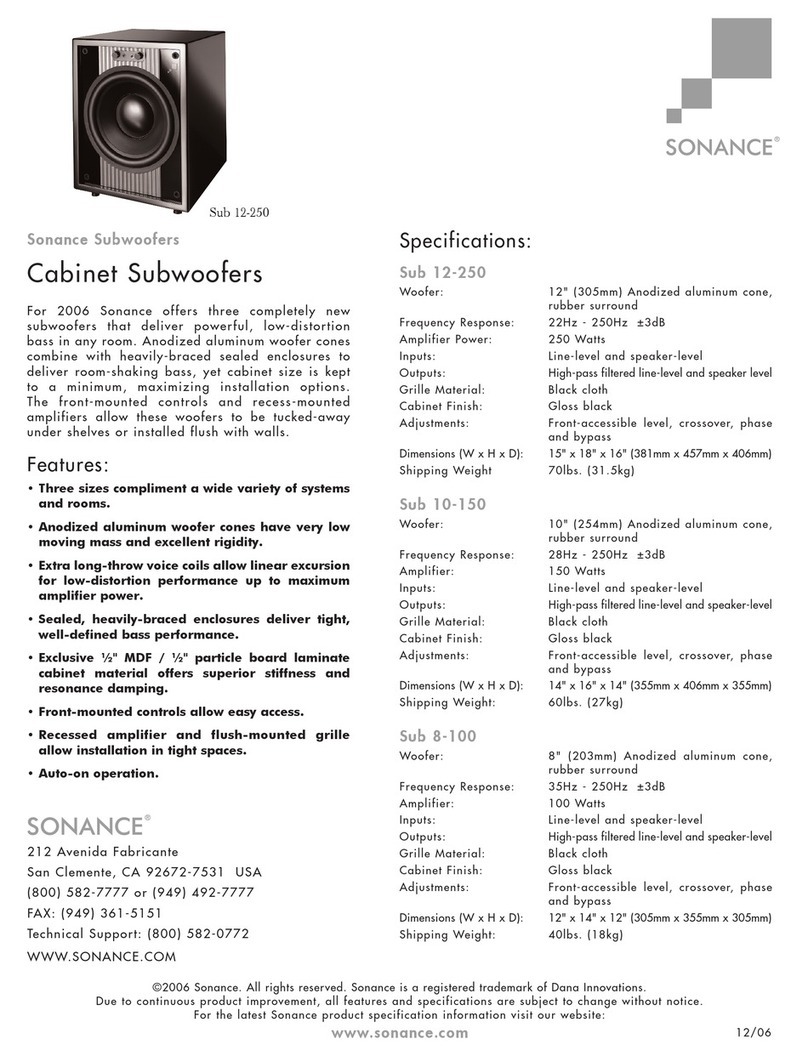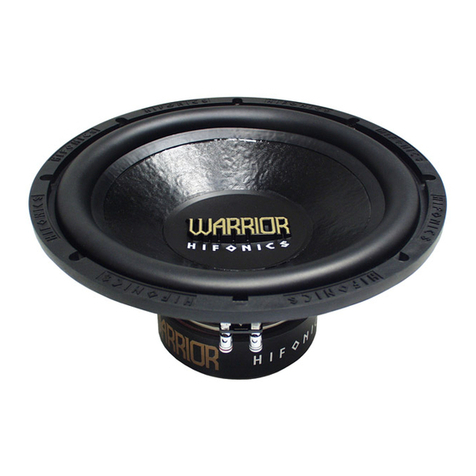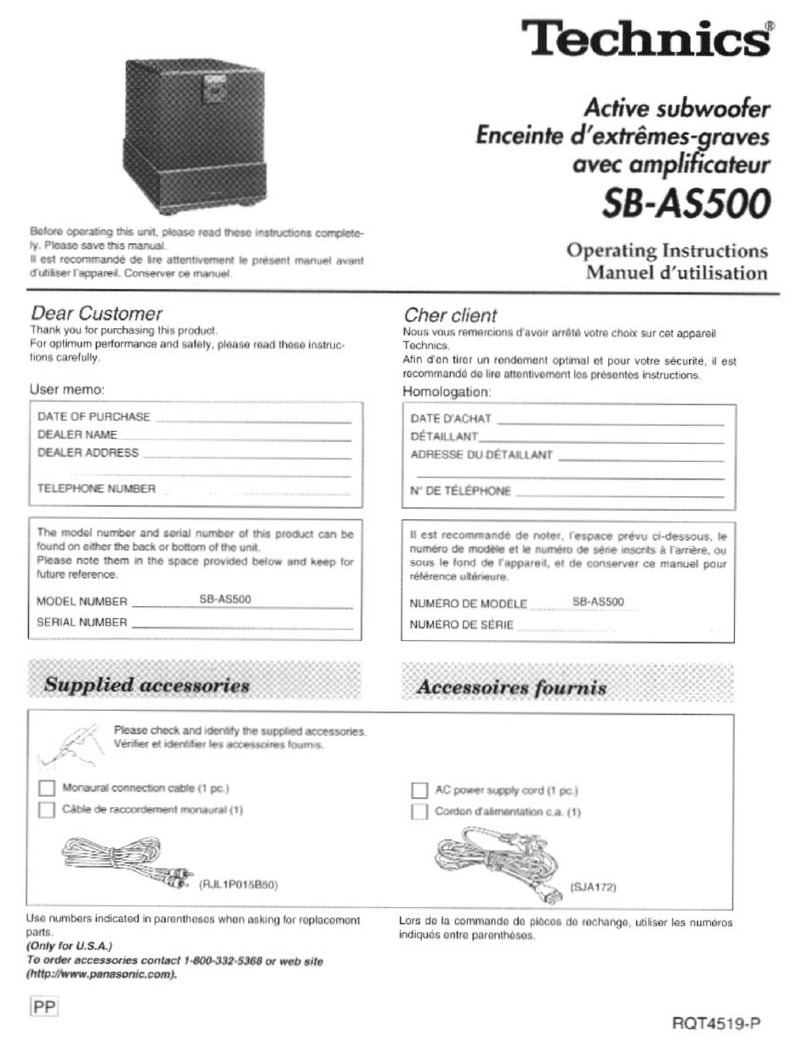
www.PyleUSA.com
4
4. Power Mode LED
This LED indicates which is the current
mode of operation and it's behavior
depending on the Power Mode switch
(3): Green: Subwoofer ON and active
with audio input signal Solid Red:
Subwoofer ON and without audio
input signal for at least 5 seconds
Blinking Red: Subwoofer in Standby
mode. The S10 enters standby mode
after 15 minutes idle without audio
signal input
5. Phase Control Switch
This switch determines if the speaker
cone should move in and out at the
same time as the main speakers or
inverted. The objective is to keep the
soundwaves in phase as most as
possible. If the system components
are working "out of phase", sound-
waves from one component may
partially cancel the soundwaves from
another, especially in the lower
frequencies region, reducing bass
performance and sonic impact.
This phenomenon depends on many
factors like the positioning of the
various components relative to each
other and to the listener
6. Volume Level Knob
Rotate clockwise to increase volume
or anti-clockwise to decrease volume
7. Low-Pass Filter Frequency
Adjust Knob
Adjust the cutoff frequency from
50Hz to 200Hz.
8. Line IN RCA Plugs
9. Boss-Reex Port
10. High Level Inputs/Outputs
Feed audio to your active subwoofer
directly from your HI-FI amplier's
output. Connect your passive
satellites to the S10’s high level output
11. High Level Input Control
This Potentiometer controls the
subwoofer's input level from the
high level inputs. Adjust it to the
desired audio input level.
CONNECTIONS
The speaker can be connected in one
of two methods. It can be connected
through the ordinary line input method
using the RCA plugs. These inputs are
summed to mono. This is the preferred
way to connect your subwoofer. If you
have a mono line signal from a digital
receiver use the right "red" input (the
output level will decrease -6dB). When
connecting a receiver to the speaker,
one can either use the Subwoofer's
dedicated output of the receiver if there
exists one, or you can use a normal
unltered mono or stereo output.
If the line input is not possible, the
speaker can be inserted between the
main amplier and the left and right
main speakers using the high level
inputs/outputs. Do not connect both
ways at the same time, only one is
required.




